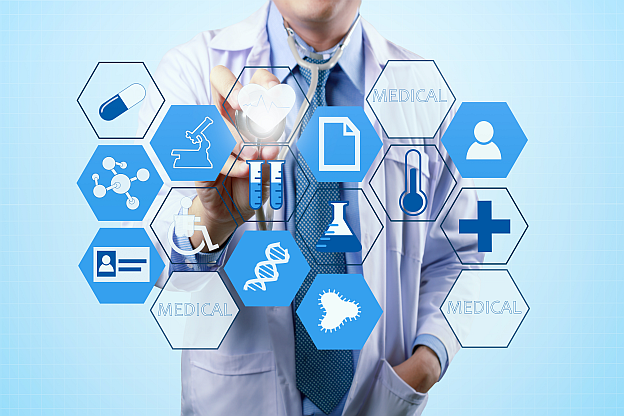I recently revisited the Annual Report of the Chief Medical Officer, published at the end of last year, in which Professor Dame Sally Davies takes “an aspirational view of what health could and should look like in 2040”. In doing so, she provides some hope about the future of health in the UK.
The vision of personalised data
The Annual Report of the Chief Medical Officer suggests we will “evolve from Electronic Health Records to an individualised ‘Electronic Health Engine’ that integrates high dimensional data about the individual, including social and economic determinants of health, behavioural risks, biomedical, genomic and citizen-generated data, to generate real time dynamic risk trajectories”. This vision places personalised data at the heart of the health service. Data is a central theme throughout the report – Dame Sally Davies dedicates four of the 15 chapters to its role in the future of healthcare, including in artificial intelligence.
AI is founded on high quality clinical information
It is widely acknowledged that artificial intelligence (AI) holds huge potential for healthcare. The Annual Report highlights Dr Dominic King, clinical lead at DeepMind, who has stated that AI is capable of “unlocking the full potential of other promising advanced technologies being developed in medicine”. He goes on to say that, through AI, data and technology can be used to “achieve a much more precise grasp of potential treatment needs, both at the patient and population level”. If the full potential of AI in healthcare is to be reached, however, it will require a foundation of high-quality clinical information. The measurement and recording of this information must, therefore, become an automatic feature of interactions on a patient’s healthcare journey.
Speech to text saves clinician time and improves the quality of data recorded
In a previous blog, I highlighted that up to 50 per cent of clinician time can be spent on documentation, while only around 13 per cent of their working time is spent with patients. I have also highlighted that speaking is up to three times faster than typing, making speech recognition software a key method of releasing more clinician time away from administrative tasks. However, the health system will only benefit from this if the information going into the Electronic Patient Record, or the ‘Electronic Health Engine’, is accurate and good quality information. The best way of ensuring this is to make the recording of this information a seamless and natural by-product of clinician-patient engagement. Speech to text has been shown to improve the quality of information recorded during consultations.
Making a difference at the frontline
There are several examples where speech recognition software has helped in this way. In the outpatient department, clinicians using it has led to turnaround time for letter to GPs and patients dropping from weeks to just two to five days at the Homerton University Hospital NHS Trust. This has also been replicated at Oxford Universities Hospitals NHS Foundation Trust. We have found similar outcomes in a community physiotherapy service, a mental health service and histopathology service. In the latter, a backlog of 600 pathology cases was removed and the organisation is now exceeding the national turnaround target. In a fast-moving, unpredictable emergency department, using speech recognition software has resulted in a saving of up to 40 per cent of documentation time.
So, while there are a number of key technologies that will enable Dame Sally Davies’ 2040 vision, tools to record personal data in an electronic, codifiable format are essential. Speech recognition software can deliver that, and I believe it will be the primary tool for recording healthcare interactions well before 2040.







